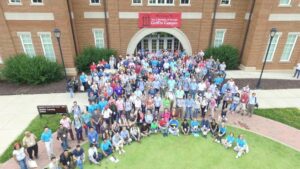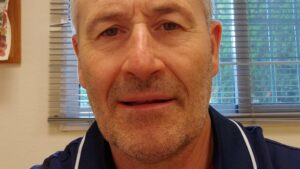The International Society for Seed Science showcases groundbreaking research at its 12th triennial conference.
Seeds may be tiny, but that doesn’t make them any less powerful. These miniature powerhouses are what keep life as know it going, and they’re poised to literally fuel a world expected to reach nine billion by 2050.
The power contained within them was on full display at the 12th triennial conference of the International Society for Seed Science (ISSS) held in Monterey, Calif., in September. The theme this year was Seeds as Systems, and the nearly 200 people present discovered how much has been accomplished, but also how much is left to be learned, about how these tiny factories contribute to human life on this planet.
“Scientists need to get together once in awhile and have their ideas challenged and learn from others,” says Kent Bradford, director of the Seed Biotechnology Center at the University of California, Davis. He helped host the meeting this year.
“This meeting is quite broad — we cover everything from seed ecology to molecular biology. It gives us seed scientists a chance to ask people from the industry what their problems are, what they’re working on. Scientists need to cross-fertilize their ideas and learn from one another. It’s a small community, but a tight one.”
The ISSS has just over 200 members from around the world, all working to advance the field of seed science.
Quality is Critical
Holding the conference in Monterey this year, not far from the Salinas Valley, was significant. The vast majority of salad greens eaten in the United States and Canada are grown in the valley, known as “America’s Salad Bowl”. Dominant crops are strawberries, lettuce, tomatoes, spinach, broccoli, cauliflower, wine grapes, artichokes and celery.
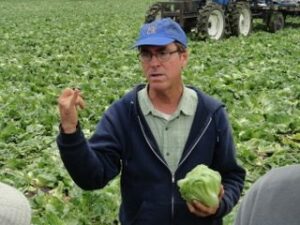
“Seed is really a baseline resource we use here. We need high-quality seed and well developed varieties with characteristics the market wants. The market is very demanding,” says Richard Smith, Cooperative Extension farm adviser in the Division of Agriculture and Natural Resources at the University of California, who took attendees on a tour of the valley’s artichoke and lettuce fields.
Artichokes have been a seed success story in the valley in recent years. The once-dominant perennial artichoke propagated by cuttings has been displaced by the annual (seeded) artichoke, which is now grown extensively for its resistance to disease and the fact that less labor is needed to harvest them. Dominant varieties include Imperial Star and Emerald.
“The growers have needs for high production, so disease resistance and everything else is very important. We rely on the seed industry for new products that meet those needs.”
Those new products begin with fundamental research done by seed scientists like those belonging to the ISSS. Bradford’s research looks at plant flowering times, and how flowering could one day be controlled to suit industry needs.
“We have a lot of crops like those here in California — lettuce, spinach, cabbage — where the product is not the seed, it’s the vegetative part. A lot of breeding goes on to prevent those crops from flowering. If we have a spell of hot weather and the lettuce flowers, it spoils the crop. How can we stop that from happening?” Bradford says.
“Of course, when you want seed, you need them to flower. It looks like we can find the trigger and tell them when not to flower and when to do so and create seed. That would be an incredible ability for plant breeders and seed companies to have.”
Ménage à Trois?
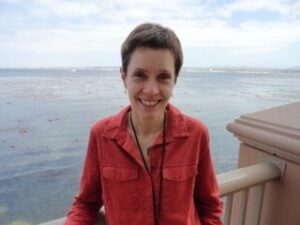
France’s Gwyneth Ingram, researcher in the plant reproduction and development lab at Ecole Normale Supérieure de Lyon, is one of those researchers doing important fundamental research into how seeds function and how we can harness that power in ways we’ve never been able to before. Her keynote speech “The Developing Seed: A Mechanical Ménage a Trois” gave attendees important insight into the physical interactions between a seed’s embyro, endosperm and maternal tissues during early seed development.
“Ménage a trois is an analogy I use quite frequently. Seed development is a very intimate relationship. It’s like a pregnancy — the embryo is the fetus, the endosperm functions like a placenta, and the maternal tissues are like a uterus. I want to know how these three compartments interact with one another, and how does one tissue respond to the physical forces imposed on it by another tissue in the seed?” she says. “The communication that goes on is very complicated.”
A key finding of Ingram’s research is that is the three compartments do communicate and sense the mechanical stresses imposed on them by one another. Knowing more about these basic communication mechanisms could one day help plant breeders control basic characteristics like seed size and speed of germination.
“We are looking at setting up different tests for seed size, and how it affects seedling vigour and establishment the field. What Gwyneth’s research is basically showing is that as opposed to the seed coat being a static, controlling feature, a lot of your seed size comes from the zygotic component, and that’s a different way of thinking about the entire seed size process,” says Susan Slater, seed technology manager at Bayer’s Crop Science division in Saskatchewan, Canada.
For Slater, attending the ISSS conference is hugely valuable because it gives her firsthand insight into the strides being made that ultimately result in new discoveries at the product level.
“I always support basic, fundamental research — we need to have it. There’s getting to be more and more of a push not to fund that fundamental research. I will see different things in the field or get questions from my agronomists, and I don’t know why the seeds or plots act the way they do. If I can talk to seed scientists and get their take on those issues from a fundamental level, I can set up experiments to try and solve some of those problems that would otherwise be baffling to a lot of us.”
Plant Decision-Making: Flowering and Seed Dormancy
Plants make two big decisions: when to flower and reproduce, and when to terminate the dormancy of their seeds, which leads to the establishment of a plant.
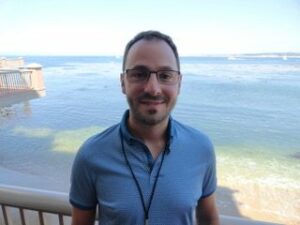
“We are looking at how seeds are using information from the environment to optimize the timing and positioning through which they terminate dormancy,” says Toronto’s George Bassel, member of the ISSS board who’s doing his own research into how seeds perform the feats they do.
He did his Ph.D in molecular and cellular biology at the University of Guelph in 2006, and is now a professor of plant computational biology at the United Kingdom’s University of Birmingham.
“Seeds are the way plants move through space. They can move from here to there, and they can move through time. Seeds are space-time travelers, and the way they exit and enter this twist of time is through dormancy. We want to know how seeds are optimizing that decision.”
Such knowledge could also have a huge impact on plant storage, something ISSS president Henk Hilhorst of the Netherlands is studying. Hilhorst, professor in the plant sciences department at Wageningen University, studies resurrection plants — a small group of plants able to revive themselves after being completely dried — and how the ability of seeds to be stored for long periods can be ported over to plant tissues themselves to possibly breed other plants to be desiccation tolerant.
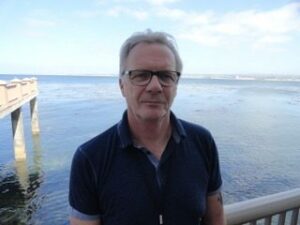
“Seeds can be dried and stored without dying, which is the basis of modern agriculture and civilization as we know it. This is an amazing survival strategy on the part of a seed. When you dry most plants, however, they die. In the field it can only withstand a certain level of drought,” he says.
“If we can build in that desiccation tolerance, during a period of dry weather, a plant could stop growing and the moment it starts raining, it will come back again.”
This has major ramifications for the age of climate change and the breeding of drought-tolerant plants, but also could potentially be used to create new consumer products. Hilhorst already has an idea for one such product: dehydrated lettuce. Manufacturers could pack these little brown masses in a very attractive way and sell them in supermarkets for consumers to take home, put in water, and watch grow in their kitchen until it’s big enough to eat.
Theoretically, the dried lettuce product could be stored indefinitely on shelves, thereby cutting down on food waste caused by unsold lettuce having to be thrown out once it’s past its best-before date.
“This is something we think is fundamentally possible. In the genome of these crops, the instructions for desiccation tolerance exist, but are directed only at the seeds and not the leaf tissues. We are looking for the switch that turns it on in vegetative tissues. We’re certain it’s there — we just have to find it,” Hilhorst adds.
Visualizing Seeds
Of course, it wasn’t just the inside workings of seed that was highlighted at the ISSS conference. Birte Boelt, senior researcher in the Department of Agrocecology, Crop Health at Denmark’s Aarhus University, presented her research on the use of multispectral imaging in seed quality analysis. A multispectral image captures high-resolution image data within specific wavelength ranges across the electromagnetic spectrum. These images are then put together to give a detailed pictured of the surface of a seed.
“It can be used to see to what extent the seed is developed. It gives us an insight we haven’t had before,” she says. Boelt is working to encourage the International Seed Testing Association (ISTA) to adopt the technology’s use in a seed testing capacity.
The 13th triennial ISSS conference will take place in Brighton, England, in 2020.



